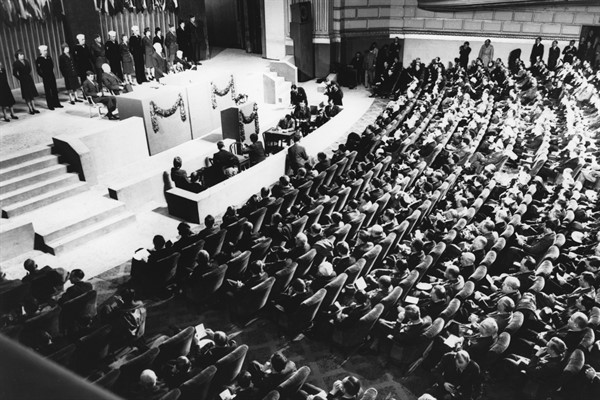Seventy-five years ago this Friday, humanity accomplished something miraculous. On June 26, 1945, while World War II was still raging across the Pacific, 50 nations gathered at San Francisco’s Opera House to sign the Charter of the United Nations.* The culmination of years of planning, the new international organization was intended “to save succeeding generations from the scourge of war.” Although the United Nations would often fall short of that lofty goal, its creation was a monumental achievement, providing the foundation for a rules-based international order.
The San Francisco conference had opened to great fanfare on April 25, 1945. Mindful of President Woodrow Wilson’s failure to secure Senate ratification of the League of Nations after World War I, President Harry Truman ensured bipartisan representation on the large U.S. delegation. Led by Secretary of State Edward Stettinius, it included members of the Senate Foreign Relations Committee, like Texas Democrat Tom Connally and Michigan Republican Arthur Vandenberg, and the House Foreign Affairs Committee, like New York Democrat Sol Bloom and New Jersey Republican Charles Eaton, among many others. The State Department also extended semiofficial status to 42 civil society groups, ranging from the American Bar Association and the Council on Foreign Relations to the Congress of Industrial Organizations, the League of Women Voters and the nation’s oldest civil rights organization, the NAACP.
The challenge before U.S. negotiators, as they saw it, was to create a postwar structure of peace that reconciled the ideal of sovereign equality with the custodial role the great powers must inevitably play in safeguarding the world order. American officials took pains to co-opt rather than run roughshod over the small and medium-sized countries assembled in San Francisco. Still, the most substantive negotiations occurred not in the daily plenary sessions but in informal, nightly gatherings of the “big five”—the United States, Great Britain, the Soviet Union, China and France—in Stettinius’s penthouse apartment at the Fairmont Hotel.

